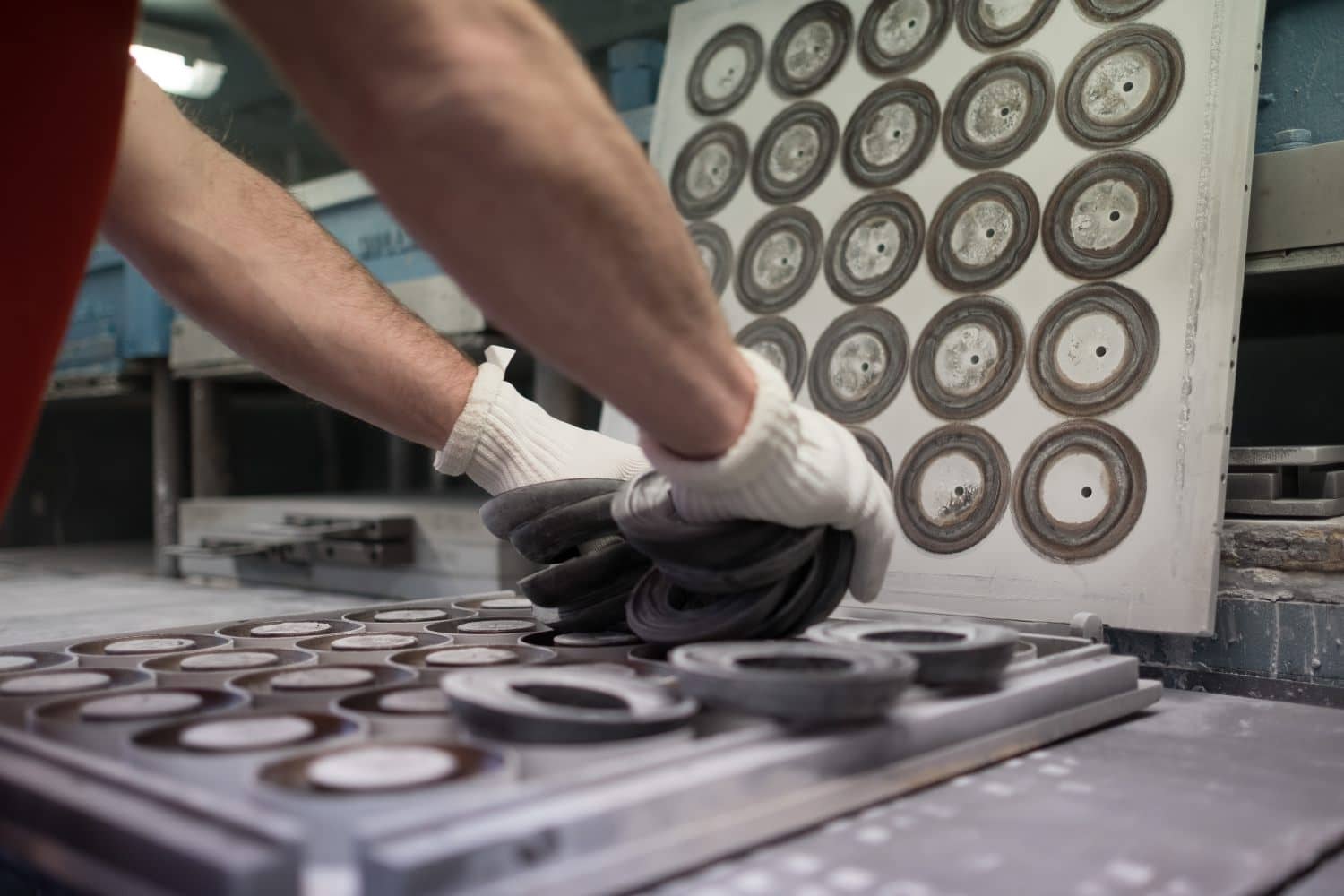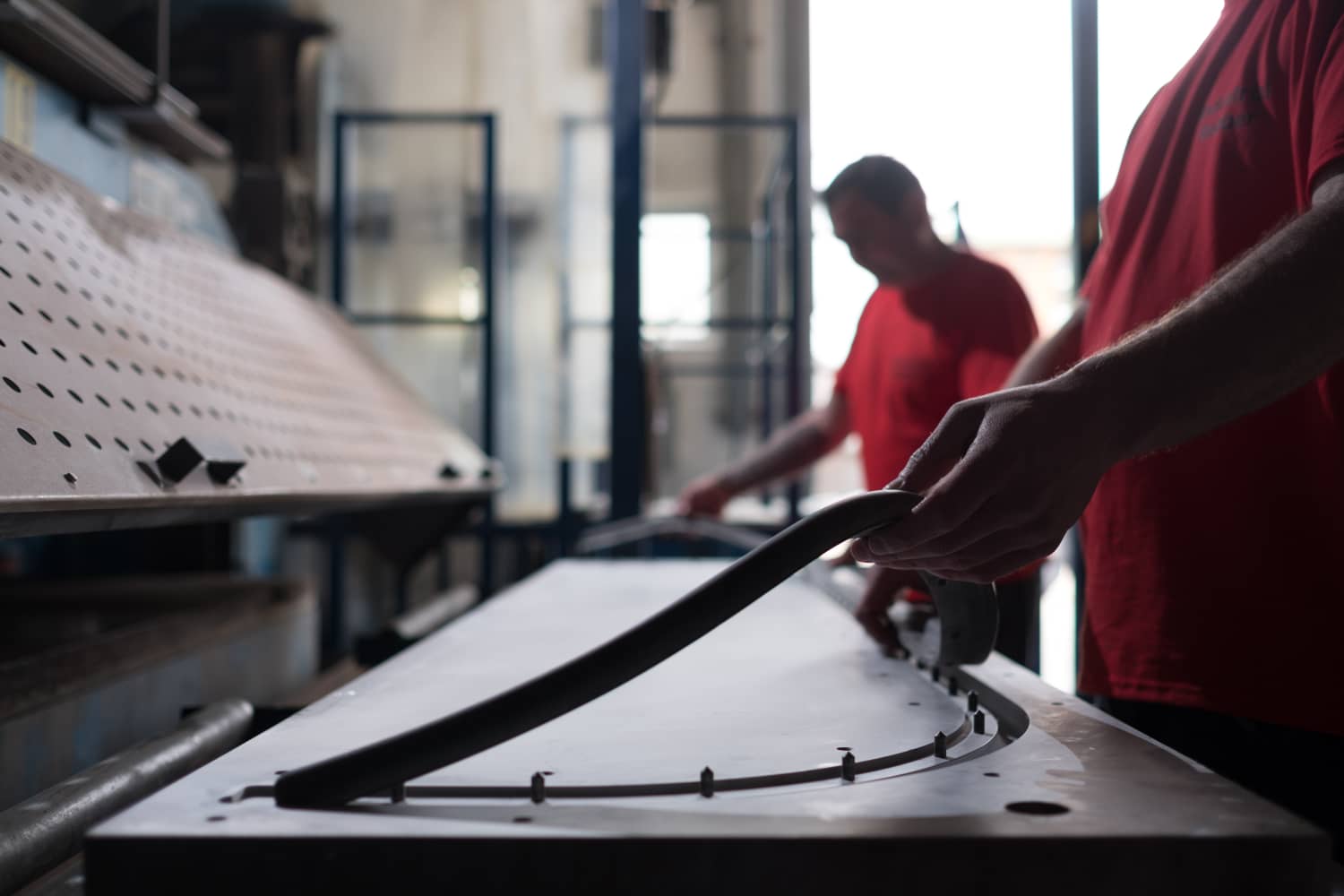Manufacturing closed cell sponge in the UK
Using the latest equipment and technology Industrial Rubber manufacture parts in sponge rubber in the UK. Sponge rubber products and components are mainly used for sealing applications. The properties of sponge rubber as a material is incredibly versatile, tough and has fantastic longevity. We have different grades and polymers available in our sponge range including, Natural rubber, Neoprene and EPDM.
Sponge rubber compression moulding is an efficient way of moulding a rubber product through a simple manufacturing process. The rubber compound is different to normal rubber compounds as it contains a blowing agent. Blowing agents are materials that, when heated, give off a gas, usually nitrogen or carbon dioxide. As the gas is generated during the moulding process it causes the uncured rubber to encapsulate the gas forming cells. It then vulcanises to set it in shape. The moulding process is compression moulding but is operated at lower pressures and temperatures to “normal” compression moulding. Depending on the manufacture, the parts are either de-moulded when the tool is still hot or the tool is left to cool before de-moulding.

EPDM
A synthetic rubber that has a wide range of properties, mainly used for sealing, weatherproofing, windows and doors, it is extremely durable and hardwearing.
Nitrile Sponge
Soft and flexible and used traditionally in shock or impact absorption, noise reduction and insulation properties, also used for gas, air and moisture sealing.
Compression moulding sizes
Our largest sponge moulding press is 2250mm X 1250mm where we are able to manufacture large seals and gaskets.
Industrial Rubber can help with both material and process selection for the manufacture of sponge rubber components.

Sponge is used in applications where a seal has to cope with large tolerances such as Ceramic pipes. It is also used where there are low compression forces available to effect a seal i.e. Plastic boxes and closures, automotive doors/ hoods/ boot seals.
Some Sponge rubbers have the ability to be compressed and reduce in volume so it is used in applications where large deformations are required when fitted. Solid rubbers require large loads to deflect them and behave hydraulically and bulge out when compressed.
Sponge Rubber can also be used where thermal or sound insulation is required.
Industrial Rubber can supply a wide range of foam and cellular materials, including, Natural rubber, Neoprene, PVC, Nitrile, Silicone and EPDM.